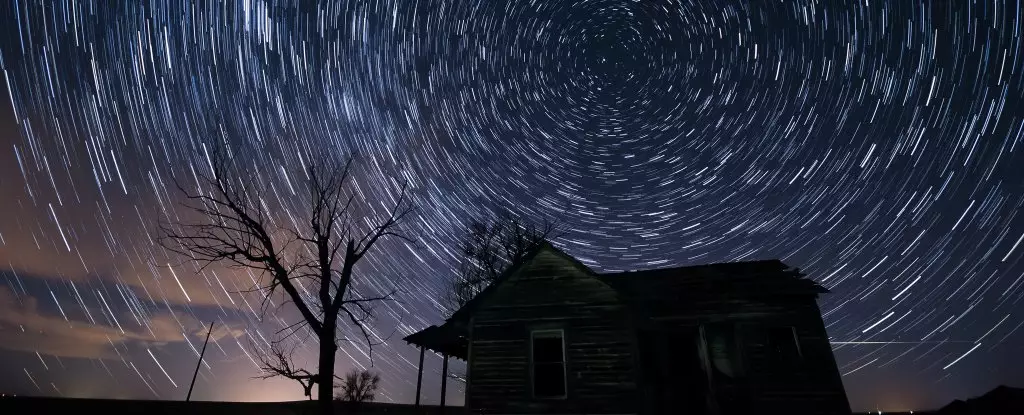As the year begins anew, January provides a unique opportunity for astronomy enthusiasts to engage in a myriad of skywatching phenomena. The first weekend of 2025 is particularly rich in celestial events, offering the chance to witness the Quadrantid meteor shower, a striking ‘SuperSun,’ and a lunar occultation of Saturn. These happenings offer both novice stargazers and seasoned astronomers thrilling ways to connect with the cosmos.
Kicking off the astronomical calendar, the Quadrantid meteor shower peaks on January 4th, with a Zenithal Hourly Rate (ZHR) projected at a commendable 80 meteors per hour. This is especially impressive as it coincides with the waxing crescent Moon, illuminated at just 27%. The Moon’s faint light will pose minimal interference, paving the way for a remarkable viewing experience.
Astronomical reports indicate that the showers will reach their climax between 15:00 and 18:00 Universal Time (UT) on January 3rd. This timing particularly benefits observers located in the northern Pacific, offering them the best chance of witnessing the meteors at dawn. However, the peak viewing times are adaptable, allowing stargazers across North America and Europe to enjoy the spectacle during the early hours of January 3rd and 4th. Given how fleeting the shower’s peak can be, it is wise to plan ahead.
The Quadrantids derive their name from the now-obsolete constellation Quadrans Muralis, which has been reallocated among modern constellations. This fascinating tidbit serves as a reminder of the rich history embedded within contemporary astronomical observations. The source of these meteors, asteroid 2003 EH1, adds another layer of intrigue, as it is not a typical comet but an asteroid, setting the Quadrantids apart from other meteor showers.
On January 4th, Earth reaches perihelion, marking its closest approach to the Sun at a distance of approximately 0.98333 astronomical units (AU). This occurrence takes place at around 13:00 UT, which allows us to appreciate the irony of being nearest the Sun during the depths of winter in the Northern Hemisphere. While many people might assume that warmer weather accompanies proximity to the Sun, the contrasting seasons highlight the complexities of Earth’s orbit.
During perihelion, the Sun appears marginally larger in the sky, which can lead to fascinating visual comparisons. Notably, the Sun’s size is a cool 32 arc minutes across, a slight increase from its apparent size during aphelion in July. This celestial dance adds an unexpected layer of wonder for stargazers and can be an excellent topic of conversation while watching the Quadrantids.
As if the meteor shower and perihelion were not enough to excite skywatchers, the evening of January 4th offers yet another treat: the Moon will occult Saturn around 17:24 UT. This event is particularly favorable for observers in Europe and presents an excellent opportunity to see the stunning sight of Saturn disappearing behind the crescent Moon’s shadow. The Moon is expected to be about 25% illuminated, making it an exciting time for viewing occultations as the celestial body obscures Saturn for approximately 45 seconds to a minute.
This unique event adds excitement to a weekend filled with celestial wonders. As Saturn is nearly 39 arc minutes wide (including its rings) and shines at first magnitude, the contrast between its brilliance and the dimness of the Moon provides a striking visual experience. Furthermore, this enchanting spectacle is just the first of two lunar occultations involving Saturn in 2025, with the next one occurring on February 1st.
For those unable to observe these events in person, astronomer Gianluca Masi is hosting a series of virtual sessions to guide audiences through the Quadrantid meteor shower, the lunar occultation of Saturn, and another exciting planetary alignment featuring Venus. Skywatching doesn’t have to be limited to the physical realm; virtual gatherings can expand access to astronomical phenomena for people across the globe.
As this chilly January draws astronomy lovers outside under the vast, starry sky, every observer is reminded of the joy found within the remarkable occurrences of our universe. Whether through a telescope or with the naked eye, the early days of 2025 promise not just a celebration of the icy winter sky but a shared sense of wonder that binds humanity to the cosmos. Embrace the cold, grab your hot cocoa, and prepare for an exhilarating start to another year in astronomy!


Leave a Reply